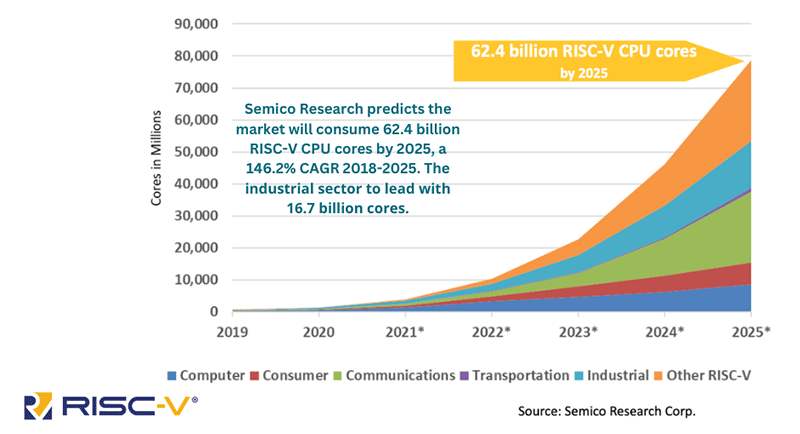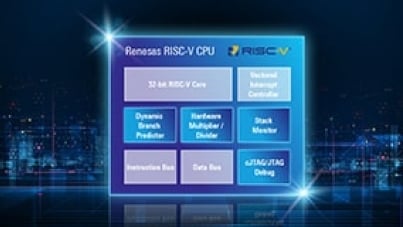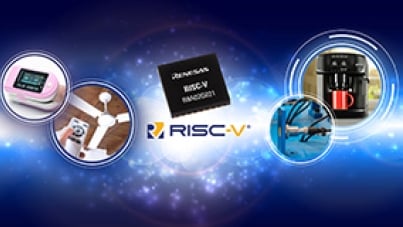Renesas recently celebrated the launch of our general-purpose, 32-bit RISC-V-based microcontroller – the first commercially available MCU to use the Renesas-developed RISC-V CPU core. The breakthrough expands our MCU leadership by establishing the only MCU portfolio with options based on open-source RISC-V, Arm® Cortex®-M, and our own RX CPU cores.
For an excellent technical description of the new 32-bit RISC-V R9A02G021 MCU series, I encourage you to read the "RISC-V Unleashes Your Imagination" blog written by my colleague, Giancarlo Parodi.
Since the March launch, it's struck me that the microcontroller sector is evolving in an exciting direction by providing designers with a growing menu of choices tailored to their performance and power requirements. Unlike the classic 1990s debate between the merits of x86 (CISC) and PowerPC (RISC) CPU architectures, there is plenty of room under the MCU tent for competing – and complementary – processor cores. The common denominator is how best to serve our customers, who increasingly are prioritizing ease of design and the availability of an extensive toolchain network.

RISC-V: Where It's Heading
While it may still be in its infancy in many respects, we see it as our mission to move RISC-V from an academic pursuit to a viable commercial alternative backed by a reliable, time-tested embedded processing supplier and a robust software ecosystem. There are few manufacturers with the resources and track record required to make that claim. Having worked closely with the RISC-V International open-standards group, we've ensured that our RISC-V MCUs are poised to help customers win new sockets in consumer, medical, industrial, and IoT applications while moving from legacy 8- and 16-bit MCUs with a 32-bit performance upgrade and open-source instruction set architecture. For larger companies, that means a streamlined path to market. For smaller companies and start-ups, we derisk their investment by providing both a free-of-charge development system based on our e² studio IDE as well as commercial environments like SEGGER Embedded Studio for RISC-V and IAR Embedded Workbench for RISC-V to efficiently compile, analyze and debug code.
Which MCU Architecture Is Right for You?
Historically, the proprietary RL78 16-bit MCUs have proven appealing for applications targeting low power and low cost with a very large portfolio and extensive packaging options. Customers requiring higher performance might consider the 32-bit RX family, which incorporates our own IP for memory, processor, and bus interconnect and is therefore optimized for maximum operational performance and code efficiency.
The RA 32-bit Arm Cortex-M-enabled MCUs provide a direct line into the well-established Arm ecosystem to accelerate the development of computationally intensive IoT applications while ensuring data security in industrial and building automation, healthcare, and home appliances.
Customers interested in non-proprietary CPU core architectures, and who are looking for a cost reduction as they re-work legacy systems, will be attracted to RISC-V. It has the potential to streamline and consolidate today's fragmented SoC architectures by embedding a variety of different and incompatible processors such as the main processor, graphics processor, subsystem controller, and audio DSP, all of which use different software stacks. RISC-V, given that it is free from the control of a single supplier, also protects future customer software investments and enables new business models.
As for Renesas' portfolio, these MCUs are designed so that the combination of memory, features, performance, package, and operating temperature does not overlap with existing derivatives from our MCU catalog, which provides further differentiation and clear positioning.
With the addition of RISC-V, we have added the choice of an open-sourced architecture, which many designers prefer, but with the professional level of tools, support, and quality customers expect from an industry leader such as Renesas. We have chosen to invest significant resources to develop RISC-V technology and to help build the ecosystem that supports it.
The real winner here is the customer. We believe offering more choices opens up more opportunities for our customers and partners to innovate. We're excited to see the results.


